How do you teach your students critical thinking? It begins with cause and effect! These 30 cause-and-effect activities will help your students make connections while having fun.

Why Should You Teach Cause and Effect?
As children grow, they begin to see connections. One of these connections is cause and effect.
Teaching children cause-and-effect relationships is vital for their social, emotional, and educational development.
Causes and effect teaches critical thinking.
Every action has an outcome. When children understand this, they can analyze a situation and problem-solve.
It’s also the foundation for scientific reasoning.
Cause and effect helps children make good choices.
Children begin life by acting on impulse. As they grow, they must learn to foresee the consequences of their behavior and think before they act.
By mastering this skill, they can make better choices.
Learning by doing rests on understanding cause and effect.
Experience is the best teacher if, and only if, your students understand cause and effect.
When they can see the connection between two events, they can learn from hands-on experiences.
Understanding cause and effect promotes empathy.
When children learn how their actions affect others, they can develop empathy and better social skills.
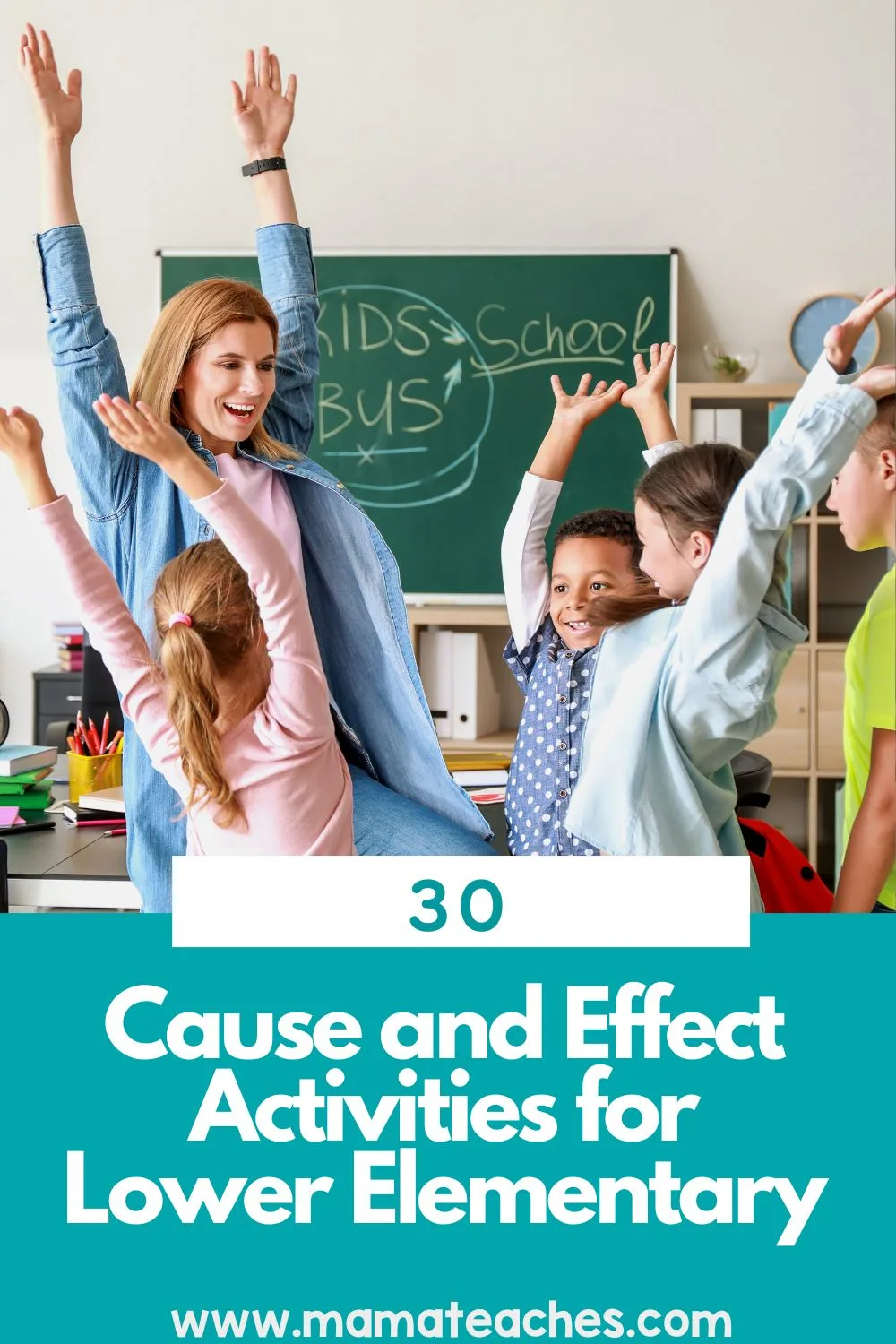
This article contains affiliate links to things that you might like.
Cause and Effect Relationship Explained
Two events have a direct cause-and-effect relationship if they occur at the same place, one right after the other.
Without the first event happening, the second event would not occur.
Here are some examples that lower elementary students would understand.
Cause: You don’t brush my teeth. Effect: You get three cavities.
Cause: You flip a light switch. Effect: The light turns on (or off).
Cause: You eat a bunch of sweets. Effect: You feel sick to your stomach.
Cause: You study hard for a spelling test. Effect: You spell all the words correctly on the test.
Cause: You put cookies in the oven. Effect: Your house smells amazing!
Teaching Cause and Effect Through Activities
The best way to learn cause and effect is through a cause-and-effect activity.
You can introduce a concept orally, but you should always back it up with a demonstration or an activity that requires participation.
When students interact with what they are learning, they are more likely to pay attention and remember it.
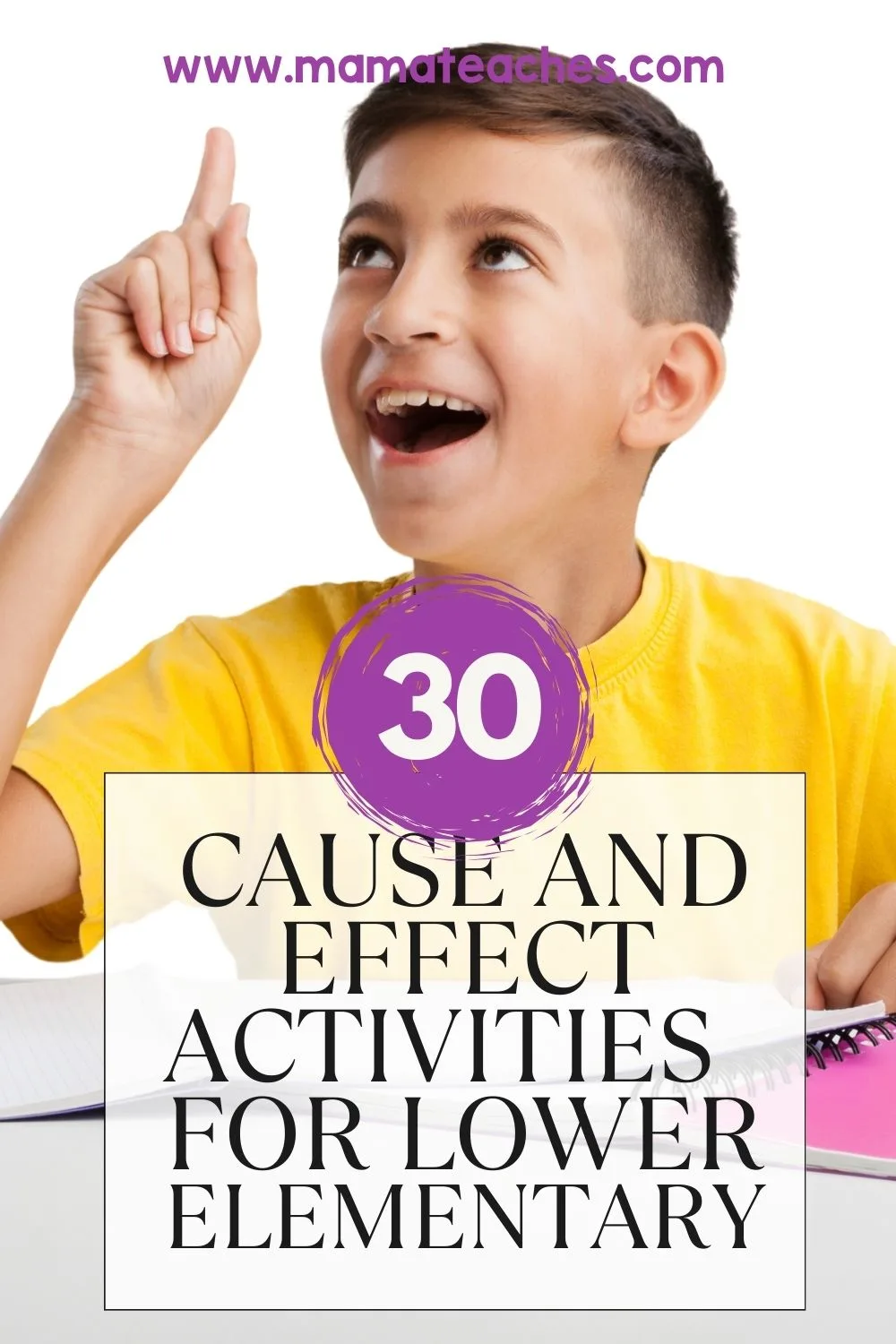
30 Lower Elementary Cause and Effect Activities
These hands-on activities will help lower elementary students understand the relationship between cause and effect.
Cause and Effect Matching Game
Create cards with different causes and effects that students need to match.
You can use pictures or words.
For example, you could show a picture of the sun rising and then a rooster crowing (with the sun in the background).
Picture Book Analysis
Read picture books with clear cause-and-effect relationships and discuss them with students.
You can do this after you finish a book (“Why did the dragon get bigger and bigger?”).
As your students grasp cause and effect, you can pause mid-story to ask inferencing questions to predict what will happen next.
Cause and Effect Chain
Have students create a paper chain of linked causes and effects, connecting them together.
This is a hands-on cause-and-effect activity that connects to art.
You can create a chain of activities by outlining books like If You Give a Mouse a Cookie by Laura Numeroff.
Cause and Effect Dominoes
Create domino cards with causes and effects printed on them. Then, have students match them up.
You can do this easily using printable vinyl sticky paper and dollar store dominoes.
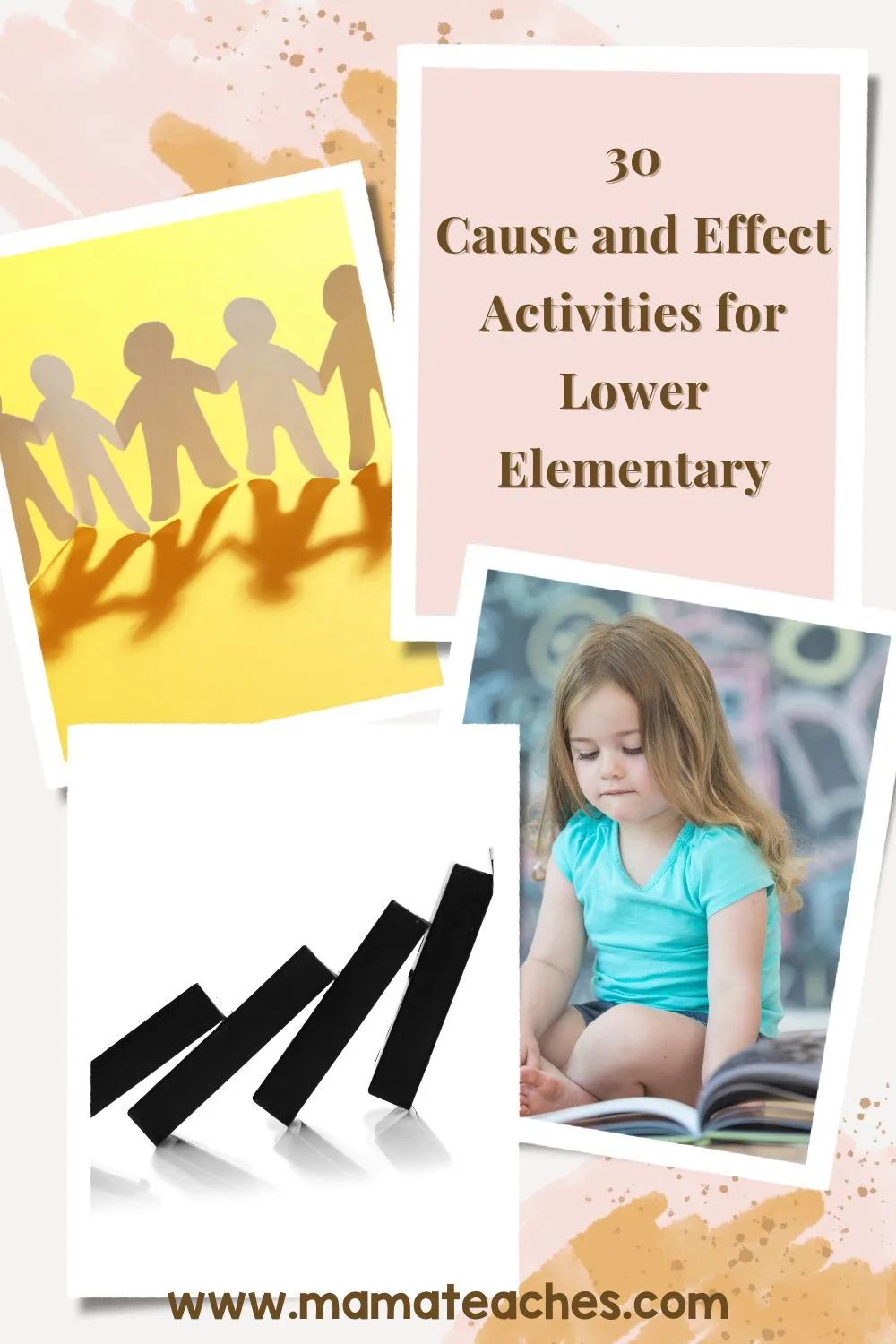
Cause and Effect Sort
Provide a variety of scenarios and have students sort them into cause and effect categories.
This is a perfect large-group activity. Write the cause or effect on a sheet of paper and have students take turns posting them on one side of the board or another.
Cause and Effect Collages
Ask students to create collages that illustrate cause-and-effect relationships.
For example, what causes a plant to grow? Put a picture of a healthy plant in the center of the collage.
Surround it with pictures of sun, soil, water, and even pollinators like birds and butterflies.
Story Writing
Have students write simple stories that include clear cause-and-effect relationships.
You can provide them with various story prompts like:
- How I Became President of the United States
- How My House Became Full of Bubbles
- How I Rescued a Baby Squirrel (or Dragon)
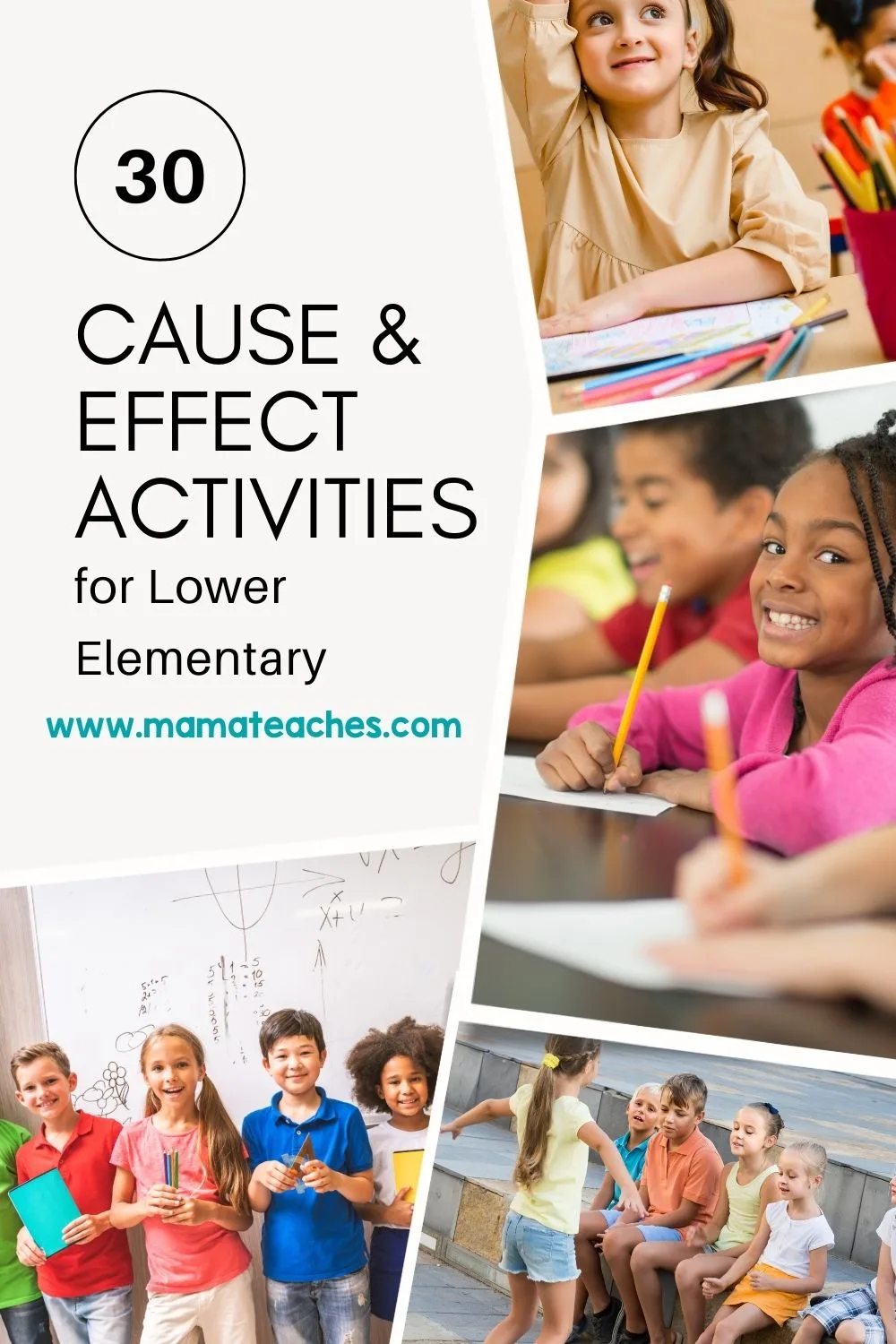
Cause and Effect Charades
This cause-and-effect activity is a game.
Act out different cause-and-effect scenarios, allowing classmates to guess the relationship.
You write out the cause-and-effect relationships for the students to act out, and then they draw them from a bowl.
Here are some examples:
- Swimming quickly and winning a medal for first place
- Eating too fast and getting a stomach ache
- Painting and accidentally getting paint on your shirt
- Blowing a bubble from your gum, and then it pops in your face, covering your face with sticky gum
Comic Strip Creation
Ask students to create comic strips that depict cause-and-effect situations.
You can give them examples, or you could have them illustrate a story in comic book form (like Aesop’s fable “The Fox and the Crow”).
Cause and Effect Puzzles
Create puzzles with pieces that show causes and effects, and have students put them together correctly.
This is as simple as printing a picture and cutting it into six pieces.
You could set up different puzzles at learning stations and have groups of children rotate from puzzle to puzzle.

Real-Life Examples
Discuss real-life examples of cause-and-effect relationships, such as actions and consequences.
Historical biographies are a great place to get these examples.
Do you need inspiration? Check out our Bios for Kids articles.
Science Experiments
Science is all about cause and effect!
Engage students in simple science experiments where they can observe cause-and-effect relationships firsthand.
Rube Goldberg machines are perfect for illustrating cause and effect (you can find great videos of these–or make your own).
Cause and Effect Relay Race
Divide the class into teams, each given a cause or an effect, and have them race to find their matching partner.
You can reuse your cause-and-effect cards or dominoes.
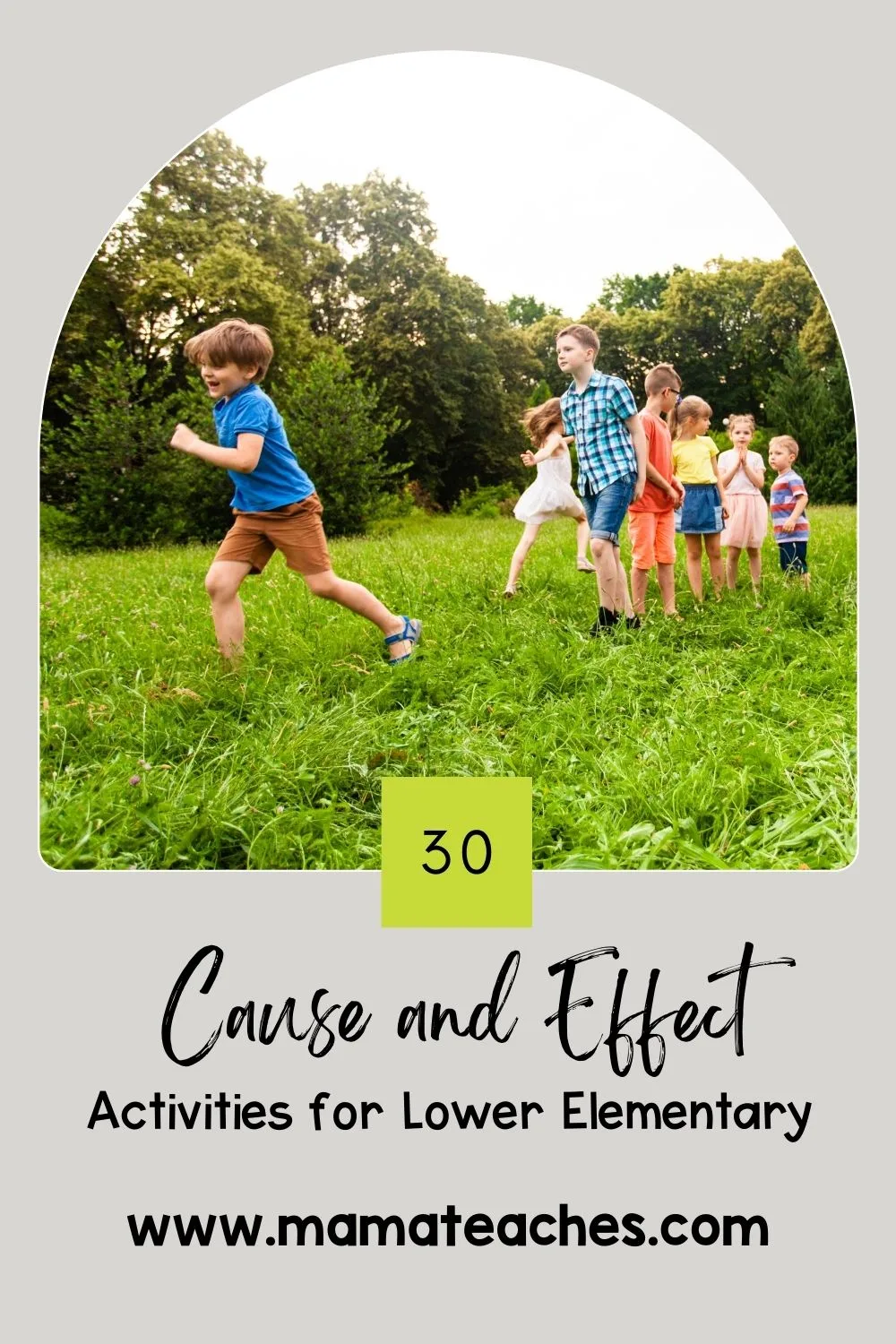
Cause and Effect Drawing Challenge
Provide students with different scenarios (causes) and have them draw the effect in each situation.
For example, what would happen if someone dropped a banana peel on the floor? Draw the effect!
What would happen if you fed a cat your ham sandwich? Draw the effect!
Cause and Effect Rap or Song
Encourage students to write and perform a rap or song that explains different cause-and-effect relationships.
Or you could write one and have the class perform it!
Cause and Effect Timeline
Create a timeline where students can map out cause-and-effect relationships from historical events.
You can use different colors of yarn to show the relationships.
Cause and Effect Word Search
Develop a word search puzzle with words or phrases related to cause and effect, challenging students to find them all.
Here are some examples:
- study – learn
- seek – find
- eat – feel full
- run – sweat
Cause and Effect Skit
Have students work in groups to create skits that demonstrate various cause-and-effect scenarios.
You can show everyday situations or re-enact a scene from literature or history.
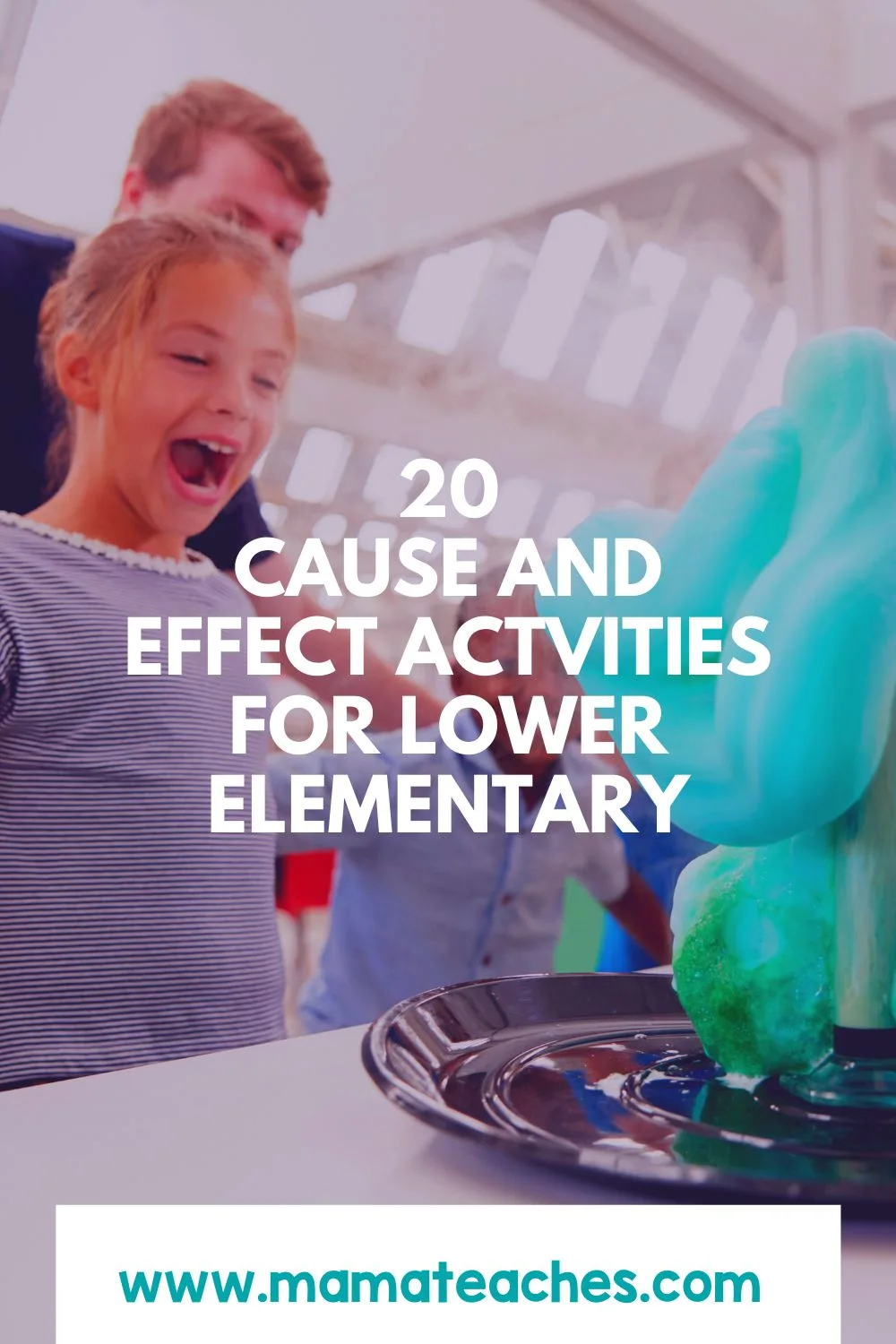
Cause and Effect Reflections
After reading a story or watching a movie, ask students to reflect on the cause-and-effect relationships they observed.
This works exceptionally well with short stories and films (I love the Pixar short films for this activity).
Cause and Effect Trading Cards
This cause-and-effect activity ties to art and springboards off students’ love for trading cards.
Have students design trading cards featuring causes on one side and effects on the other.
You can create a template for them to color and label. Have them create a matching set of their cards to trade them with one another.
Or you can use a copier to make multiple copies.
Cause and Effect Relay Drawing
In relay teams, students add the cause or effect to a drawing, building upon each other’s ideas.
What if your class illustrated the book If You Give a Pig a Pancake?
The result would be a class canvas of creativity and cause and effect!
Cause and Effect Bingo
Create bingo cards with different causes or effects, calling out scenarios for students to mark off on their cards.
You can create code words for each scenario, such as “BURNT TOAST: You leave the toast in the toaster for too long, and it burns.”
Cause and Effect Comic Strip Analysis
Provide students with comic strips and ask them to identify the cause-and-effect relationships depicted.
Many comic strips illustrate cause and effect with hilarious results.
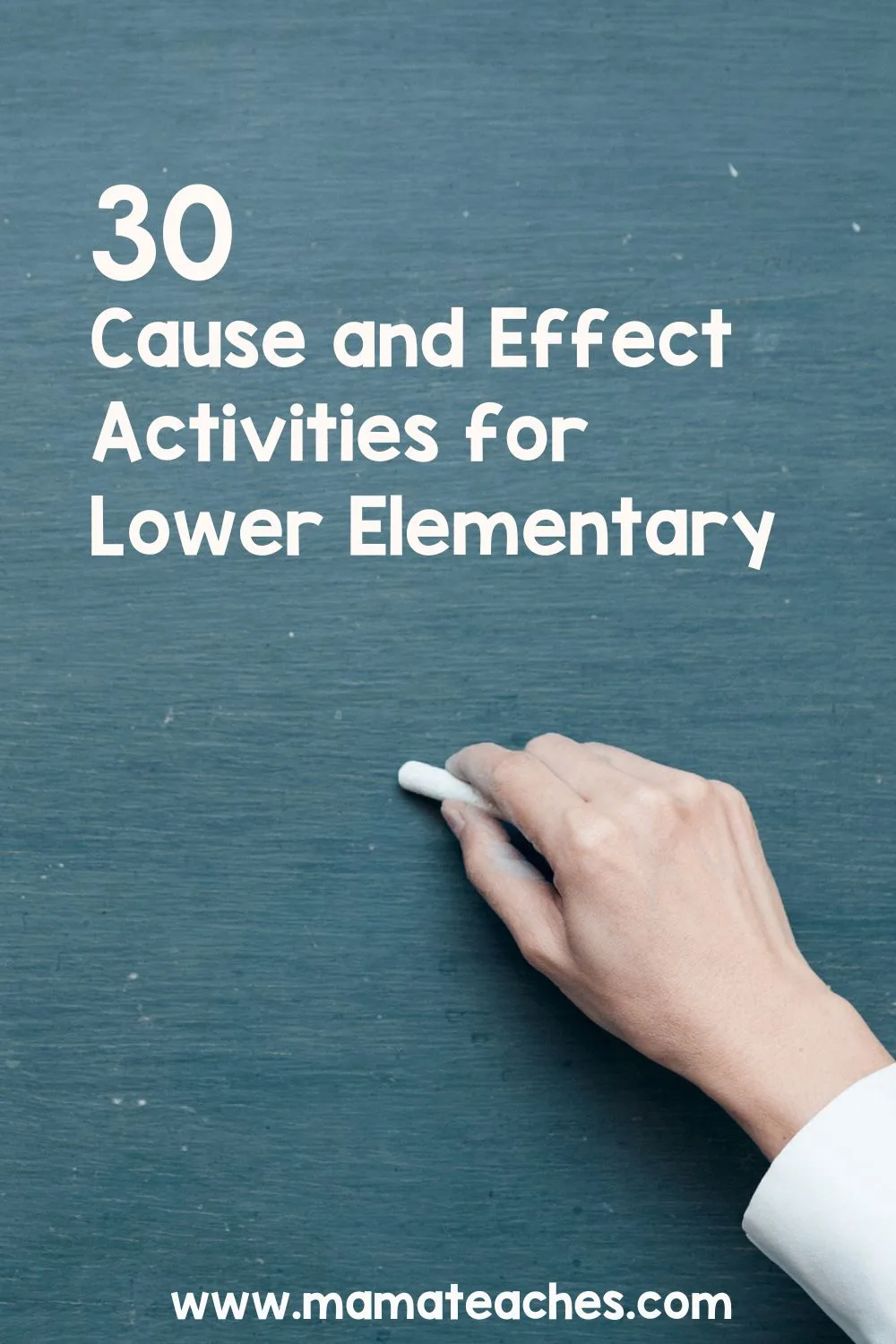
Cause and Effect Interactive Notebook
Have students create an interactive notebook to write, draw, or glue examples of different cause-and-effect relationships.
You could have them add a scenario every day.
If needed, give them prompts such as “What would happen if you won a $500 Target gift card?”
Cause and Effect Science Demonstration
Illustrate cause and effect with various science demos related to physics.
For example, how does the slope of an inclined plane affect the speed of a car/marble? (You can use a Hot Wheels track).
Cause and Effect Puppet Show
Allow students to create puppets or use stuffed animals to perform a puppet show demonstrating cause-and-effect relationships.
Everything is more fun when it involves puppetry!
Cause and Effect Graphic Organizers
Provide graphic organizers for students to fill in with causes and effects from stories or real-life situations.
You can pull out the graphic organizer whenever you read a story with a cause-and-effect relationship.
Students can draw or write the cause-and-effect relationship.
Cause and Effect Reflection Journals
Have students reflect on their actions, identifying causes and effects in their daily lives.
This works well for social-emotional development.
You can use prompts like “Name a time when you used kind words. What was the result?”
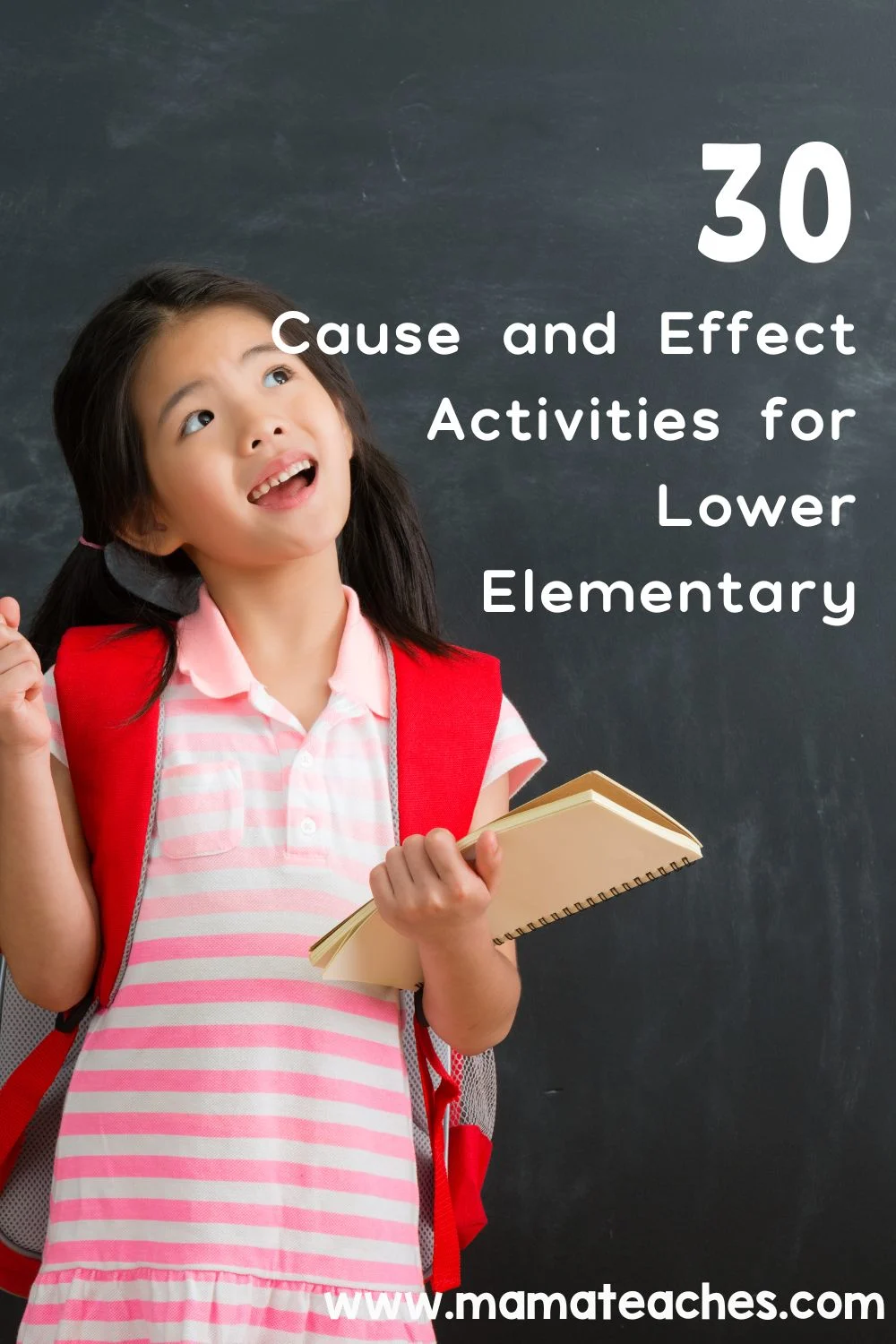
Cause and Effect Digital Presentations
Create digital presentations (slideshows, videos) explaining different cause-and-effect scenarios.
You can find many of these by searching “Cause and Effect GIFs.”
Cause and Effect Board Game
Design a board game where students navigate through different cause-and-effect-related obstacles to reach the finish line.
(Or use Chutes and Ladders! It’s all about cause and effect!)
Teaching Cause and Effect
Teaching cause and effect to lower elementary students helps them develop critical thinking skills, make good choices, learn by doing, and advance their social-emotional skills.
By teaching cause and effect with a cause-and-effect activity, you make learning this relationship easy and fun.
